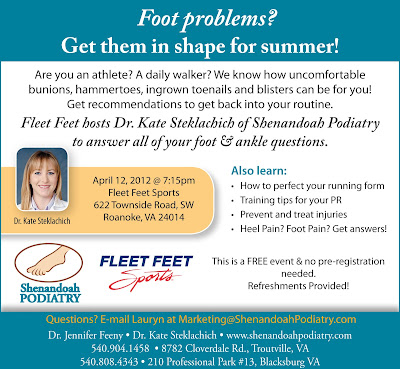 Anatomy of the Nail:
Nail Plate
Anatomy of the Nail:
Nail Plate- Is the hard and translucent portion of the nail.
Nail Bed- Is the skin underneath the nail plate.
Matrix- Is the part in which the nail rests and is responsible for the production of the cells that become the nail plate.
Hyponychium- Distal nail groove which forms a seal that protects the nail bed.
Nail Grooves- Medial and Lateral
Lunula- The whitish crescent-shaped base of the nail.
Nail disorders are more common than people know. There are a number of different nail disorders that can be treated by your podiatrist. Nail abnormalities can show problems with the color, shape, texture, or thickness of the nails. Sometimes the nails can tell the health of a patient.
Here is a group of some common nail disorders:
Anonychia- This is the absence of the nail itself.
Beau's Lines- Is a depression across the nail plate which is caused by a stressful event.
Green Nail- A disorder of the nail that may be due to an infection caused by Pseudomonas.
Hapalonychia- A pliable nail plate that is usually caused by hyperhidrosis.
Clubbed nail- When the angle of the nail plate and proximal nail fold is greater than 180 degrees. This condition may occur in cardiac, pulmonary, or gastro-intestinal disease.
Koilonychia- This is known as a spoon nail. This condition is seen in iron deficiency anemia.
Leukonychia- Is a disorder of the nail where the nail exhibits white spots.
Lindsay's Nail- A condition that shows the far half of the nail discolored pink or brown and the near half dull and white. This disorder is seen in liver disease.
Macronychia- Is an abnormally large nail.
Mee's Line- A white band across the nail that is associated with arsenic poisoning or a stressful event.
Melanonychia- A disorder that demonstrates longitudinal, pigmented bands in the nails .
Micronychia- Is an abnormally small nail.
Onychatrophia- This disorder shows atrophy of the nail.
Onychauxic Nail- This disorder shows hypertrophy (Thickening) of the nail.
Onychia- A disorder where there is inflammation of the matrix.
Onychocryptosis- This is an ingrown nail.
Onychogryphosis (Rams horn nail) - Another disorder where there is thickening of the nail.
Onycholysis- This is a separation of the nail plate from the nail bed.
Onychomalacia- This is a softening of the nail plate.
Onychomycosis- Is a nail that is infected with a fungus.
Onychophosis- This type of nail is seen with a callus in the nail groove.
Onychopuntata- This disorder shows pitting of the nails as seen in lichen plannus, alopecia, and psoriasis.
Onychorrexia- Nails that are abnormally brittle.
Onychoschizia- This condition demonstrates splitting of the nail plate into layers.
Paronychia- Inflammation of the tissue folds around the nail. There may be infection with this type of nail.
Raquet Nail- A short and fat nail.
Subungual Hematoma- Associated with trauma. There is formation of a hematoma underneath the nail plate.
Terry's Nail- With this condition the proximal 2/3 of the nail plate is white. This disorder can be seen with hepatic cirrhosis.
So you see, there are many disorders of the nail. Some disorders may be more serious than others. If you suspect any nail disorders,
make an appointment with your
podiatrist to be properly evaluated.








